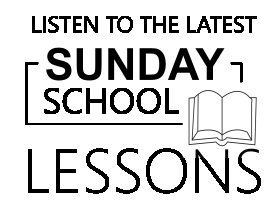 Pentecost was a feast that God told the Israelites to celebrate. The Jews celebrated Pentecost 50 days after Passover; that’s why it had the name “Pentecost.” That Old-Covenant feast was a joyous day, which, over time, became an entire week of celebration. The people thanked God and presented to Him the first-fruits of the wheat harvest. From that harvest, believers presented to God two loaves of bread, made from fine flour and baked with leaven.
Pentecost was a feast that God told the Israelites to celebrate. The Jews celebrated Pentecost 50 days after Passover; that’s why it had the name “Pentecost.” That Old-Covenant feast was a joyous day, which, over time, became an entire week of celebration. The people thanked God and presented to Him the first-fruits of the wheat harvest. From that harvest, believers presented to God two loaves of bread, made from fine flour and baked with leaven.
In the rabbinic tradition, Pentecost also celebrated God giving Moses the Torah at Mt. Sinai, 50 days after the exodus. And so in the Old Covenant for Pentecost, we had a double dose of 50.
Because Pentecost was a feast that God had commanded (Leviticus 23), it was a feast that many Jews traveled to Jerusalem to celebrate. And so when we find the Jews still gathered for Pentecost 50 days after Jesus rose from the dead, we find the infant New-Testament Church on the cusp of many changes. Then, the Church numbered 120 people: 11 Apostles and around 110 laypersons, including women and children.
This infant Church did not yet know how Jesus fulfilled the Old Covenant feast of Pentecost. On that feast day, there was the New-Testament Church, all gathered in one place, surrounded by Jews from all over the Roman World. Jewish visitors and pilgrims filled Jerusalem. These were people who had fled Israel during the previous 600 years because of oppression and war.
Yet, most of those Jews couldn’t speak or read Hebrew. They knew Greek as that was the language of business transaction, a holdover going back to the days of Alexander the Great. But for everyday use, most of the Jews had long ago adopted the local languages where they lived.
So, on the day of Pentecost, the 120 followers of Jesus would’ve been unnoticed among the tens of thousands who flooded the city. Yet, God would do something miraculous that day. He would send His Holy Spirit through His Son, just as Jesus had promised. That would begin a new feast in the Church’s life, also called Pentecost, which would supersede the Old-Covenant Pentecost.
So we find the first Christians all huddled together. As they were there on that Pentecost day, the sound of a mighty, rushing wind–the breath of God–filled the room where they were waiting. As they looked at one another, they saw what looked like tongues of fire on top of each person’s head.
Suddenly, as if swept up by the wind, they were outside. Others were near the house where they were, for they, too, heard the mighty wind and were curious. And what did they see? They saw confusion. They saw 120 people speaking in different languages.
What did they hear? They heard a cacophony. The old and wrinkled, the young and sparkly-eyed, pastors and parishioners were all speaking other languages in the rush of excitement. And so “some sneered at them and said, ‘They are full of sweet wine’” (Acts 2:13).
But, of course, it was confusing. That was the new Pentecost, not the old. The new Pentecost took place, not at Mt. Sinai, 50 days after the exodus, but at Jerusalem, 50 days after Jesus’ resurrection. This new Pentecost wasn’t God giving Moses the Torah, but God giving His people His Holy Spirit, so they could proclaim the New Torah, the Gospel, throughout the world.
So, why did God use wind and fire? They were signs that God used to lead His people during their exodus out of Egypt. Later, John the Baptizer promised that Jesus would “baptize with the Holy Spirit and fire” (Luke 3:16). And on Pentecost, Jesus fulfilled that promise. Tongues of fire rested on all 120 Christians, and the Holy Spirit lived and moved in them all. And then they began to speak in various languages and dialects.
On Pentecost, we see a beautiful picture of the Church. All the Christians that day confessed Jesus to others. But it was the Apostle Peter who stood up to preach. We see a beautiful picture of the Church, with both pastor and people working in harmony, proclaiming Jesus in the various vocations where God had placed them to serve.
If Jesus’ crucifixion wasn’t enough to make the point that the Jerusalem Temple no longer served its purpose, Pentecost confirmed it. For the Temple would no longer be the place of God’s Holy Spirit. In the Old Covenant, God in the form of His Shekinah, the cloud, revealed Himself to His people above the Ark of Covenant in the Holy of Holies. In the Old Covenant, the Temple was the primary place where the Holy Spirit made Himself known.
But because of Pentecost, each Christian is now a temple of the Holy Spirit (1 Corinthians 6:19). As God breathed into Adam, and he became a living being, so Christ breathes the Holy Spirit of life into His people, and His people become spiritually alive in the New Covenant. That’s what Pentecost is all about–the Spirit giving His living breath. And filled with the Spirit, God’s people become alive, unable to be silent, confessing and proclaiming Jesus Christ. Indeed, Pentecost forever changed the New-Testament Church.
But there can be a danger of letting Pentecost enchant us for the wrong reasons. After all, Pentecost is exciting. We imagine what it would be like to have tongues of Holy-Spirit fire atop our heads. We imagine what it would be like, instantaneously speaking in other languages by a Holy-Spirit inspired fervor.
But what was the focus of Pentecost? It was Jesus. That’s what Peter preached, and that’s whom the people believed in that day. And that’s also where the Holy Spirit wants us to look, to Jesus, not Himself.
Getting caught up in all the Pentecostal pyrotechnics is not the Holy Spirit’s doing, for the Holy Spirit brings glory to Jesus, not Himself. The Holy Spirit is like a spotlight shining on Christ. And as with all spotlights, you focus on where the beam is shining, not on the beam itself. So it is with the Spirit.
Our confidence in the Spirit’s presence and working is not in the wind, fire, or tongues. No, it’s in the preached Word of Jesus, in the hearing of His forgiveness, in holy baptism, and in His body and blood. In the New Covenant, that’s where God has promised to be and work. And so that’s where the Holy Spirit is active and working! That’s where Pentecost is happening today, here and now, for you. And that’s where you go looking for it!
What does that mean? It means that your baptism is your Pentecost. Every time you hear the Word of Christ coming to you in your own language, that’s also your Pentecost. Whenever you eat Christ’s body, and whenever you drink His blood in the Supper, that’s also your Pentecost. Getting more Spirit into you is to be where the Holy Spirit is doing His work–and that work is done through Word and Sacrament.
The continuing work and life of Pentecost are not in the fire and the flaming tongues–even as enthralling as that is. The continuing work and life of Pentecost are in the Word that brings repentance and faith in Jesus–just like at the first Pentecost!
On that first Pentecost day, tens of thousands left confused and perplexed. They were the ones who didn’t believe in Jesus as the Messiah. But a smaller group, a group of 3,000, did believe. They heard Peter preach Jesus Christ and Him crucified. They were brought into the Church through the waters of baptism. That was the big deal of Pentecost–not the tongues of fire, the wind, or the languages.
St. Luke tells us that after Pentecost, those first Christians “devoted themselves to the Apostles’ doctrine, to the fellowship, to the Breaking of the Bread, and to the prayers” (Acts 2:42). In other words, they worshiped in much the same way that we still do today: Preaching, teaching, fellowship in the Bread (which is the Body of Christ and the cup that is His blood), and in the prayers.
So the language we are now to speak is the language of the Church. What is that language? It sounds like what Peter preached on Pentecost. “Repent and be baptized, every one of you, in the name of Jesus the Messiah for the forgiveness of your sins, and you will receive the gift of the Holy Spirit. For the promise is for you and your children” (Acts 2:38-39).
So, saints loved by God, repent! As Peter preached on Pentecost, so I preach to you: repent! Turn from your sins. Return to your baptism. Leave your vices behind and come begging for mercy from the King of the Jews. “For you are not your own, you were bought with a price” (1 Corinthians 6:19-20): the blood of Jesus.
Today, that same Spirit at Pentecost is also here, working among us, and delivering the peace that Jesus won for us on the cross. Jesus said, “Peace I leave with you. My peace I give you. I do not give to you as the world gives. Do not let your hearts be troubled and do not be afraid” (John 14:27).
His peace is the peace of sins forgiven. It’s standing before God fully “Jesused,” covered and filled with Christ’s divine nature and righteousness. It’s having Jesus defeat death for you and your salvation. It’s the peace that Jesus gives you in the Holy Spirit. 50 days after Easter, we in Christ’s New Covenant gather–not just to offer our first-fruits to God–but to receive the first-fruits of the Spirit.
And so, even you are part of that powerful breath and wind of Pentecost. For you, who were once spiritually dead in your trespasses and sins, now live in Christ (Ephesians 2:1). For you believe in Jesus–and you can only do that by the Holy Spirit’s working in your life. That’s why Jesus’ death is yours. That’s why His life is yours. That’s why His Spirit is yours. And whenever that is true, you are living in Pentecost. Amen.

